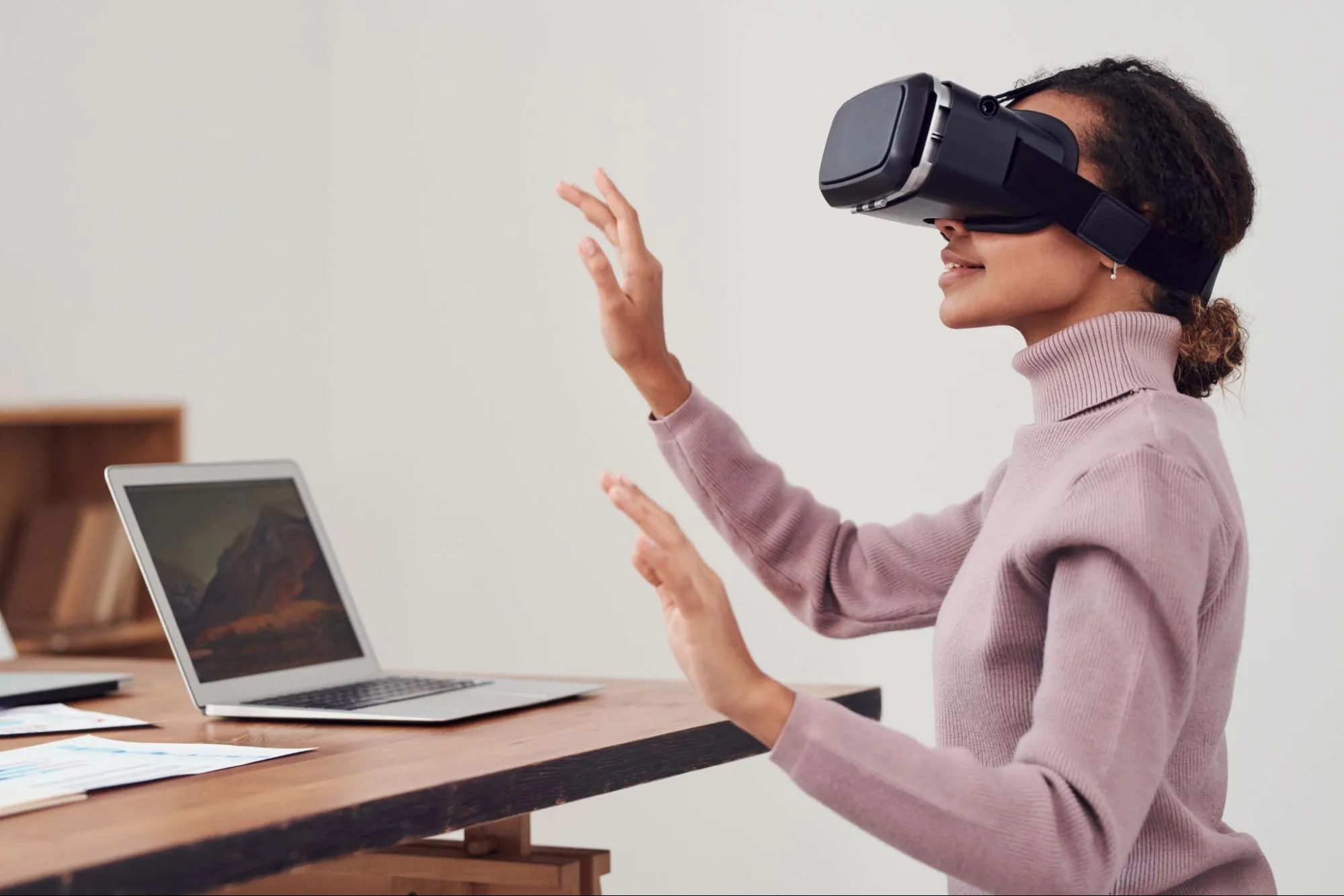How Do I Make a VR Video?
From paying attention to lighting to using the right software, here are eight answers to the question, “What are your best tips for making a VR video?”
- Capture Your Footage With a 360-Camera
- Know Your “Why”
- Keep Your Camera Steady
- Shoot Longer Scenes
- Identify Your Objectives
- Use Drones Like a Pro for VR Videos
- Start With a Great Story
- Make Sure You Use the Right Software
Capture Your Footage With a 360-Camera
This will ensure that the footage captures the entire surrounding environment and provides an immersive experience for the viewers.
It’s important to pay attention to the lighting in the scene so that the footage looks natural and realistic. Finally, when editing the footage, adjust the depth of field, contrast, and color balance to create a more immersive experience.
 Brenton Thomas
Brenton Thomas
CEO, Twibi
Know Your “Why”
Before you shoot anything, set your goals for the video. For example, do you want it to be shared? Are you selling something? Or do you want viewers to engage with your brand? You must know what you want so that you can set up your shots to deliver your message in the clearest way possible.
 Liza Kirsh
Liza Kirsh
Chief Marketing Officer, DYMAPAK
Keep Your Camera Steady
Nothing may be as unsettling and disorienting as an unstable image in a sensory encounter as fully immersive as virtual reality video through goggles. To properly engage and maintain the interest of your viewers, you must keep the camera steady as you shoot.
To hold your camera in place before taking a picture, always use a tripod or a stable surface. This does not imply that all of your pictures must be static to create engaging 360-degree films.
To shoot while moving, you could mount your tripod on a dolly or slider, for instance, or you could fasten the camera to a dashboard mount. Use your camera’s image stabilization option when taking handheld photos if you intend to do so.
 Janie Doyle
Janie Doyle
Marketing Director, SC Vehicle Hire
Shoot Longer Scenes
VR videos are distinctly different from the usual clips that do the rounds on social media and other platforms by their scene size. They play out more extended scenes because when they don’t, it only results in a jarring experience for the viewer.
You should match lighting and colors to transition from one scene to another smoothly. The reason is the immersive experience that VR offers you; frequent cuts and bold transitions only end up jolting the viewer, who now requires at least a couple of seconds to adjust to the glaringly different intensity.
This can be disturbing at frequent intervals and result in disorientation. Even as the shooting takes this detail into account, the editing must also follow the same patterns of easier transitions and extended scenes.
 Brendan McGreevy
Brendan McGreevy
Head of Strategy, Affinda
Identify Your Objectives
When you film your VR movie, I believe you should clearly understand the purpose of the video. This will assist you in focusing your efforts on personalizing the video to those exact objectives. No two VR videos are the same, and if you shoot the wrong type of VR video for your needs, it will certainly not meet its promise.
By carefully organizing your shots with the objectives of your video, be it a sale, a sharing, a request for more information, or another action, you can guide your audience’s attention to the part of the film where you want them to look. You can train their focus on your essential visual messages without telling them what to concentrate on. You can create 360-degree videos to allow viewers to explore the scene freely.
 Joe Troyer
Joe Troyer
CEO and Growth Advisor, Digital Triggers
Use Drones Like a Pro for VR Videos
If you want to take your VR videos to the sky, it’s time to reach for the drones! Making VR videos using drones takes some trial and error—but here’s a pro tip: if you have access to multi-rotor drones with a 3-axis gimbal, then you’re in business.
It pays off big time in terms of stabilization. VR viewers will thank you when they don’t get a case of VR nausea from those fantastic 360-degree views. And hey, make sure that your drone is legal wherever you’re flying—we don’t want any trouble!
 Colleen Sproull
Colleen Sproull
Content Marketing Manager, Evinex
Start With a Great Story
A virtual reality experience should be like any other story-driven media, with an interesting narrative and engaging characters. Make sure you have a firm foundation for your story before you develop the VR elements.
Choose 360-degree cameras when possible. While 3D and stereoscopic cameras are great for many applications, they can be quite expensive and time-consuming to work with. For most projects, using a 360-degree camera allows you to capture a full environment in just one shot, instead of needing multiple takes.
 Michael Dadashi
Michael Dadashi
CEO, Infinite Recovery
Make Sure You Use the Right Software
Use software specifically designed for VR to format the video properly for the desired platform and so you achieve the best possible quality. Some popular software options include Adobe Premiere Pro, Apple Final Cut Pro X, and CyberLink PowerDirector.
Other tools, such as VRay and Autopano Video can stitch together multiple angles and adjust the viewing angle of the video. With the right software, you can create an immersive and engaging experience for viewers.
 Andreea Saveluc
Andreea Saveluc
SEO Team Leader, NoN Agency
Submit Your Answer
Would you like to submit an alternate answer to the question, “What’s your best tip for making a VR video?”
